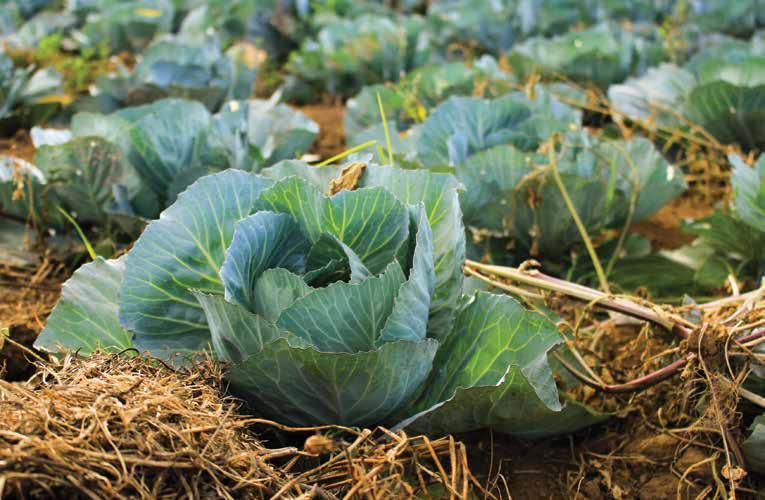
3 minute read
The Sustainable Vegetable Garden
The 150-foot-deep Providence Canyon in Southwest Georgia (pictured above) formed rapidly during the 19th century due to poor farming practices.
Gardeners have the same challenges as farmers in maintaining a sustainable growing system. We all know that soil conservation is the most important part of agriculture sustainability. This same philosophy can and does apply to home gardens as well as large farms.
Advertisement
Home gardeners can learn several things from modern soil conservation practices. Almost everyone has heard of the Dust Bowl that occurred during the 1930s. The frequently-plowed precious topsoil that had accumulated over centuries dried in the summer heat and extended drought and was blown away during that decade. However, in the Southeast our main problem was soil eroding away in water rather than blowing away. In Stewart County, Southwest Georgia, not far from Eufaula, Alabama, there is a state park called Providence Canyon. The misnamed Providence Canyon at over 150-foot-deep is less due to the providence of God and more due to the poor decisions of man. In fact, this canyon formed rapidly during the 19th century primarily due to poor farming practices.
On a smaller scale, home gardeners experience similar problems. In addition to soil lost through water and wind, you can also lose scarce organic matter by the continual turning of the soil. It seems that both the Dust Bowl-era soil loss and the erosion soil loss had a common cause – excessive tillage.
Our farmers have largely adopted no-till practices to help combat soil and organic matter losses. Home gardeners should learn to practice no-till or limited till gardening to reduce these loses as well. Farmers mainly accomplish this through raising cover crops or leaving crop debris on the surface. Gardeners can do this as well and they have the added advantage of being able to bring mulch into the garden from last year’s leaf crop from nearby trees or hay left over from a fall landscape display, for example.
Since we can easily bring in outside sources of organic matter, gardeners often overlook the importance and other advantages of growing our own organic matter with winter and summer cover crops. Local Extension agents were encouraging farmers to plant legume crops way back in the 1920s and we are still singing the praises of these miracle crops that add nitrogen and organic matter as well as pulling valuable nutrients from deep in the soil.
Small gardeners often find it difficult to practice crop rotation on such a small scale but it is very important for long-term sustainability to develop a sound rotation plan. The first step in crop rotation is good record keeping. Make notes about where you planted what vegetables and what pest problems they had. Learn which crops are related and are the same host for important soil-borne diseases and pests such as nematodes. The Alabama Cooperative Extension System has several good publications on soil improvement and crop rotation, but the most useful one is called “Nematode Control in the Home Vegetable Garden”. Search our website at www.aces.edu for this publication. You will find a good plant rotation plan within that flyer. If the publication does not show up use the “search the archives” option.
F.H. King, about 100 years ago, wrote a book called “Farmers of Forty Centuries”. Even before the disaster of the Dust Bowl and tremendous erosion problems in the South, Professor King studied the ancient farms of China and tried to teach Americans that sustainability begins with soil fertility and conservation. Had we paid attention to his instruction the Dust Bowl and severe erosion we experienced in much of the Southeast would have been avoided. We now know it is a bad practice to wear out farm land and move to new soil and as gardeners we often have nowhere to move so we must do a good job conserving and improving what we already have. Mulch, compost and cover crops are our best friends as home gardeners.










